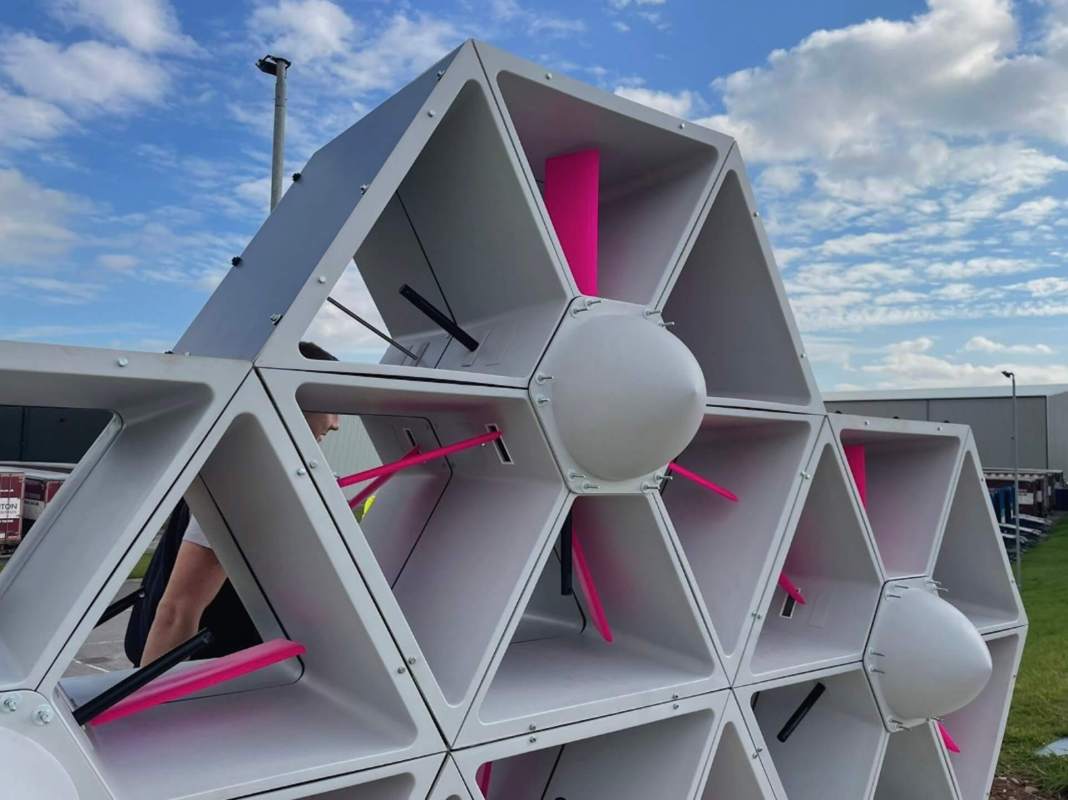Honeycombs have entered the group chat.
No, we're not talking about Honeycomb Cereal or the honeycombs that bees make. We're talking about wind turbine honeycombs — Katrick Technologies out of Glasgow, Scotland, has developed a honeycomb-shaped wind turbine that is changing the game in renewable energy.
Katrick Technologies is a startup that describes itself as "focused on innovative engineering technologies by performing energy research and development on eco-friendly concepts for a greener planet." Despite the company's startup status, it's made a significant impact in wind turbine technology already.
Traditional wind turbines — the large ones with the fan rotary at the top — are costly to install and maintain. They require a substantial amount of land as well.
Katrick Technologies has a solution: Their new honeycomb-shaped wind turbines are significantly more compact, making them better suited for urban areas with the capability to sit on already existing buildings and similar structures.
But how do they work? They utilize "oscillating aerofoils" to capture wind instead of the typical rotations of the old-school fan design. These aerofoils enable even lower levels of wind to be captured, and therefore create even more sustainable energy.
Katrick explains the process as "the aerofoils convert kinetic energy from wind to mechanical oscillations which are converged and converted into electricity." To put it in layman's terms, the aerofoils catch the movement of the wind and then turn that movement into energy.
The more stationary design of most bladeless wind turbines means these wind towers should be no more likely to lead to bird collisions than other building types, as the Greener Ideal has covered.
Katrick's are designed more like hexagonal fans, with those oscillating aerofoils moving fairly slowly in limited sections of the honeycomb design. The company has yet to comment on the safety of this in relation to birds, but even an untrained eye can see that grates could easily be placed around these turbines to prevent animals and debris from entering.
In addition to being more compact, this design cuts costs, is "unobtrusive" — per its maker — has a "small footprint" with "minimal impact on the environment and wildlife," and is long-lasting.
TCD Picks » Upway Spotlight

There are criticisms, like from the MIT Technology Review back in 2015, that despite the lower cost and footprint to make bladeless turbines, they deliver less bang for their buck in terms of functionality, with less energy-creating potential.
This particular design would likely require a lot more horizontal real estate to create the same power as one traditional wind turbine built vertically, too. Katrick, for its part, says on its website that "just 1km of our roadside panels could charge 80,000 Tesla 90kW cars or power 760 homes each year."
In any case, the smaller, simpler, and safer design's pros may outweigh any cons. Energy Industry Review even said this design "could revolutionize the way that renewable energy is generated."
Katrick Technologies is not the only company out there making an impact when it comes to renewable energy and wind. Texas company Aeromine also has a compact and efficient wind turbine, and their wind turbine design is modeled off of race cars and works in tandem with solar panels. Both models are in active development.
Join our free newsletter for weekly updates on the coolest innovations improving our lives and saving our planet.














